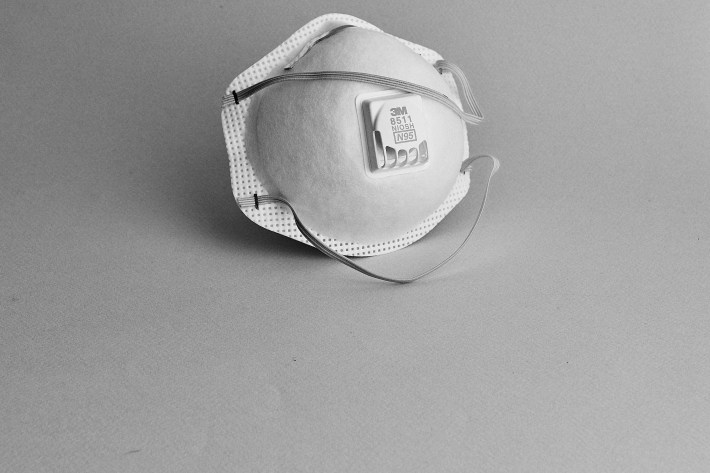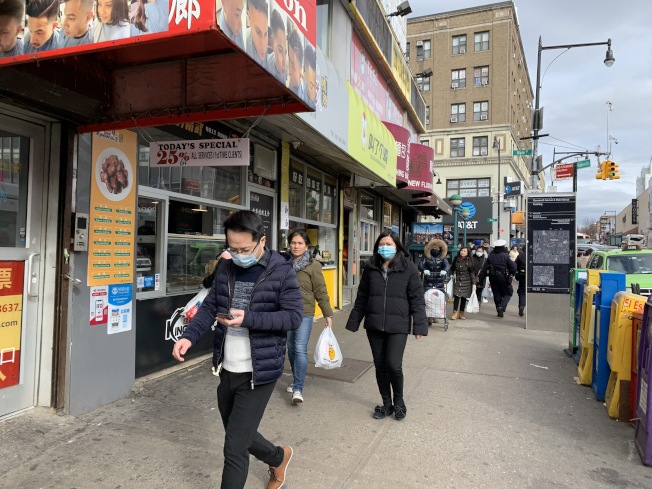It was muscle memory — and WeChat.
Asian-Americans, who comprise 14 percent of the city population, have suffered just 7 percent of the COVID-19 deaths, the lowest share, according to state data broken down by race and ethnicity. Additionally, the ZIP codes of Chinatown in Manhattan, 10009 and 10003, have some of the lowest confirmed COVID-19 cases and death rates in the city.
By comparison, whites, who comprise 32 percent of the population, account for 27 percent of the deaths. African-Americans, who are 22 percent of the population, have suffered 28 percent of the deaths.
Asian leaders believe their community avoided scores of deaths because residents knew about the virus early — and didn’t wait for Mayor de Blasio and Gov. Cuomo before taking it seriously.

“People in Flushing, for example, who have lived and traveled in China and other parts of Asia have a lot more experience dealing with these types of epidemics and were much more prepared,” said John Choe, executive director of the Greater Flushing Chamber of Commerce. “If you walked down Main Street in Flushing, you would see people wearing masks months and years ago, even before this happened.”
Dr. Bruce Lee, a Health Policy Management professor at the CUNY Graduate School of Public Health, said widespread use of masks has its roots in the SARS outbreak in 2002-03.
“Locations like Hong Kong and parts of China that were affected by that, I think you anecdotally you saw a pickup of mask use after that,” said Lee.
SARS killed nearly 800 worldwide, but only infected 29 people, all of whom recovered, in the United States. For many in the Asian community, the experience informed decisions to take this new virus seriously before any official government action.
The racial disparities of COVID-19 fatalities are glaring in the health data, with black and Hispanic populations dying at rates far higher, nearly double than whites and Asians. Economic inequality, neglect and systemic racism play major roles in health-care outcomes, but Choe declined to make broad generalizations because customs, traditions, information dissemination, wealth and poverty cross racial lines, Choe said.
Poverty in New York City’s Asian community, for example, is growing faster than among other ethnic groups, according to a report by the Asian American Federation.
“The umbrella of 'Asian American’ often includes large numbers of high income, highly educated professionals as well as low income refugees, recent immigrants, working families,” said Choe, “many of them who are undocumented or may have language issues or other challenges.”
State Assembly Member and longtime Flushing resident Ron Kim said it’s too soon to draw firm conclusions, but added that the case statistics reflect “a community that has been warning each other and the public at large about the virus very early on,” he said.
Vital peer-to-peer networks of newsgathering helped residents stay up to date on how communities in Asia were dealing with the disease.

Many of Kim’s constituents are active users of WeChat and KaKao, social media platforms popular in China and South Korea.
“Information flows very rapidly, peer to peer, in our community,” Kim said.
Chinese and Korean news services, like World Journal and Sing Tao, are also very popular in Flushing, according to Choe.
“We were all tuned into what's going on overseas much more quickly,” he said, “and kind of on a different level than, perhaps, non-Asian Americans were in the United States at the time.”
So what did Asian-American New Yorkers hear that others ignored?
Choe said he was traveling in Taiwan earlier this year when the first reported COVID-19 case emerged in China, where he said that people were taking it very seriously.
“It was on every TV screen,” said Choe. “Governments were going into action very quickly.”
Choe appreciated that the mayor dined in Flushing on Feb. 13 to show support for Asian business, but, “in hindsight, that may not have been the best thing to do,” wishing instead that the mayor focused on the importance of social distancing.
That imperative would not come for months. For instance, the mayor on March 2 tweeted encouragement to New Yorkers “to go on with your lives + get out on the town despite Coronavirus.” He even recommended that people crowd together to see “The Traitor” at Lincoln Center.
Choe says his neighborhood was already practicing social distancing and mask wearing.
On March 13, Mayor de Blasio insisted that closing public schools was not an option as cities in South Korea and Singapore were implementing aggressive strategies to tackle COVID-19.
The mayor waited until April 2 to recommend that city residents wear masks, despite evidence that mask-wearing can help reduce viral transmission. Gov. Cuomo only ordered mask wearing on April 15.
“Because of SARS, which was not too long ago, there’s a much more widespread use of masks and protective equipment,” said Choe. That experienced helped create a practice of taking more personal responsibility for not spreading germs when sick, says Choe. South Korea and other Asian governments reacted quickly to COVID-19, but Choe says that wasn’t always the case in past epidemics.
Prior experience of lagging reactions to outbreaks — indeed, like China’s initial slow response to this one — taught that it's best not to wait for the government “to tell us what's the best way to handle these situations,” he said, making “people much more willing to take precautions, you know, wearing masks and gloves.”
In addition to the already widespread use of masks in public, countries like South Korea, Singapore and Taiwan also implemented a lot of other measures very early and very quickly, said Lee, like aggressive testing, tracing and social distancing.
“The main benefit right now of wearing some kind of mask covering your face is that you’re protecting other people from you,” said Dr. Lee. (Lee's comments are bitterly ironic, given that Asians have faced hate crimes fueled by racism and xenophobia — fanned by political leaders in Washington — since the outbreak of COVID-19. The city has reported more 100 incidents of targeted harassment and discrimination against Asians since February, compared to five incidents over the same period last year. And the incidents continue, as the Daily News reported.)
Kim thinks the mayor had a late start to this response, too.
“The mayor came to Flushing and had a fundraiser type of meeting and encouraged people to go out and eat in restaurants,” he said. Instead of coming to Flushing, Kim wishes the mayor took more dramatic action to highlight public health practices already occurring in the neighborhood.
“We could have avoided a lot of this,” he said.
Looking forward, Choe said the city, state and nation needs leadership that is "open to new ideas" and a population “willing to make some short-term sacrifices" — and some long-term changes.
“The fact that the people of color in the city are being burdened with the highest infection and fatality rates should really make us rethink the way we do things in New York,” Choe said.






